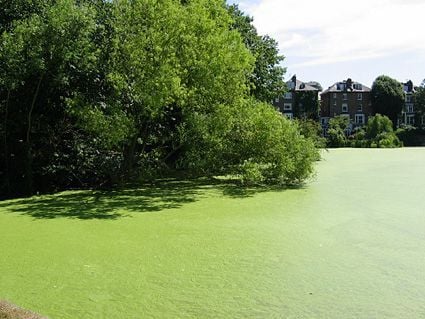Phosphorous Removal - The Future For Wastewater Treatment Plants
Phosphorus pollution is a growing problem in UK Waterways and it is a problem that future private sewage treatment plants must address.
Please telephone us on 01759 369915 for details of our existing and new sewage treatment plants which remove Phosphates.
Aleady, we are having enquiries from people who are being asked to reduce or remove the Phosphates in their sewage effluent before they will be granted access to Mains Drainage and public sewers.
Phosphate causes excessive growth of algae in rivers, ponds, lakes, etc. and this surface cover of the water blocks the light for aquatic plants and animals and reduces the oxygen levels in the water. This is called Eutrophication.
Phosphate occurs naturally, at low levels, as a result of decomposing organic matter and river bank erosion, containing Phosphorous Minerals, but by far the greatest source of Phosphorous Pollution is caused by Human activity and the products we use.
All plants and animals need some phosphorous for growth, (up to about 0.1mg/litre in lakes and rivers) but too much overpowers Nature's ability to process it without detrimental effects.
Government guidance recommends that river/pond/lake water should contain a maximum phosphate concentration of 0.1mg per litre.
Sources Of Phosphorous Pollution
Agriculture - Fertilizers usually contain Phosphorous, as it is a plant food, but excess phosphorous can run off the land, or enter land drains that discharge into watercourses, during spells of wet weather.
Sewage Discharges - All raw sewage contains Phosphorous, up to 17mg/litre, as a result of the high Phosphate content of most detergents and cleaning products.
Only about 40% is digested by the bacteria in sewage treatment plants and the levels still remain too high to discharge to sensitive waters.
For this reason, maximum levels of Phosphorous in sewage treatment plant effluent are being insisted upon by many Planning Authorities, particularly in Wales, where the rivers Cleddau, Eden, Gwyrfai, Teifi, Tywi, Glaslyn, Dee, Usk and Wye are now protected against this pollution.
Options For Lowering Phosphorous Levels In Sewage Effluent
At the moment, we can provide a Vortex sewage treatment plant, which averaged 2.9mg/litre in the final effluent.
We currently have 2 sewage treatment plants, capable of reducing Phosphates, being tested at the PIA EN Testing Centre in Aachen and these will be available soon, giving Phosphate levels of less than 1MG/L.
The easiest way of instantly reducing your levels is to choose no-phosphate detergents and cleaning products. The Aldi 'Almat' range is Phosphate free.



